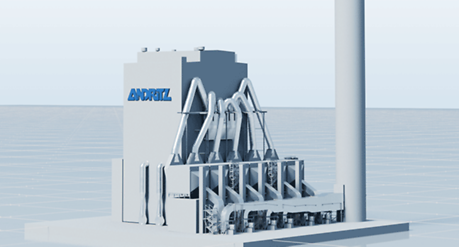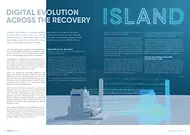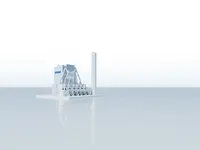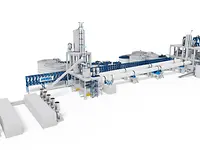EVAPORATION PLANT
An evaporation plant is utilized to produce a stable, high-solids black liquor stream for efficient combustion in the recovery boiler. Evaporator plant operators often face questions such as: How do I run the plant to minimize operational costs to the full? What rate should I run at to meet the set targets? How soon or often should I wash? What is the maximum capacity I can get right now?
ANDRITZ has accepted these challenges and is developing autonomous solutions for evaporator plant operation that center on how to add value. In the first step, machine vision technology (AVA) collects valuable data and information, supporting the operator in controlling operation and decision making. Amongst others, ANDRITZ offers a soap separation camera and turpentine level camera for the evaporation plant.
The second level of autonomous operations, Evaporation ACE, combines the knowledge and information gathered through machine vision and traditional instruments, thus providing better control of key parameters like dry solids, production rate, storage tank inventory, and fouling indication. Therefore, Evaporation ACE helps in optimizing the evaporation plant’s productivity.
A step further takes the Digital Twin. The implementation of the Digital Twin continuously solves the actual and ideal heat and mass balance continuously. It produces real-time data and predictions that can be fed to ACE controllers. One example of the use of Digital Twin in the evaporation plant is washing prediction. Washing the evaporator units is crucial for the evaporation plant to run efficiently. The status of the units is derived from the heat and mass balance that is automatically solved by Digital Twin. With Digital Twin more accurate data can be obtained than by using traditional instruments, allowing operators to plan the operation ahead of time:
Digital Twin data can also feed data to ANDRITZ Smart sequences that can dynamically:
- Decide which unit should be washed based on cleanliness status and the operational situation
- Provide a preventative opportunity wash
- Optimize washing when a bottleneck occurs
The aim of an autonomous evaporation plant is to support customers in maximizing reachable capacity, optimize flows based on feed and product tank levels, and minimize steam consumption, which result in higher productivity and reduced operational costs.
POWER BOILER
The main purpose of the power boiler is to efficiently produce power while keeping the emissions within environmentally safe limits. Today, there is a constant need to improve and optimize boiler performance and decrease the operating and maintenance costs.
Metris BOA – developed by ANDRITZ – is a web app that utilizes live data as well as historical data from the plant to optimize and analyze power plant processes and monitor the equipment installed. Tailored operation advisor apps will actively support the operator in increasing the efficiency of the boiler, detect opportunities to improve consumption values, and help start processes according to operational needs. Furthermore, automatically generated performance reports comparing current data with data from previous periods provide information at a glance for overall management of the power plant. The ANDRITZ Metris BOA platform will be integrated into the control architecture as a third layer of automation and control together with the boiler protection and plant automation systems (DCS).
The software architecture is based on micro-services with standardized communication channels. This makes it possible to tailor Metris BOA to the user’s needs.
With the Metris BOA smart solutions, ANDRITZ provides a solution to optimize the following key factors:
- Optimizing performance
- Increasing reliability
- Reducing operating costs
- Optimizing the use of resources











